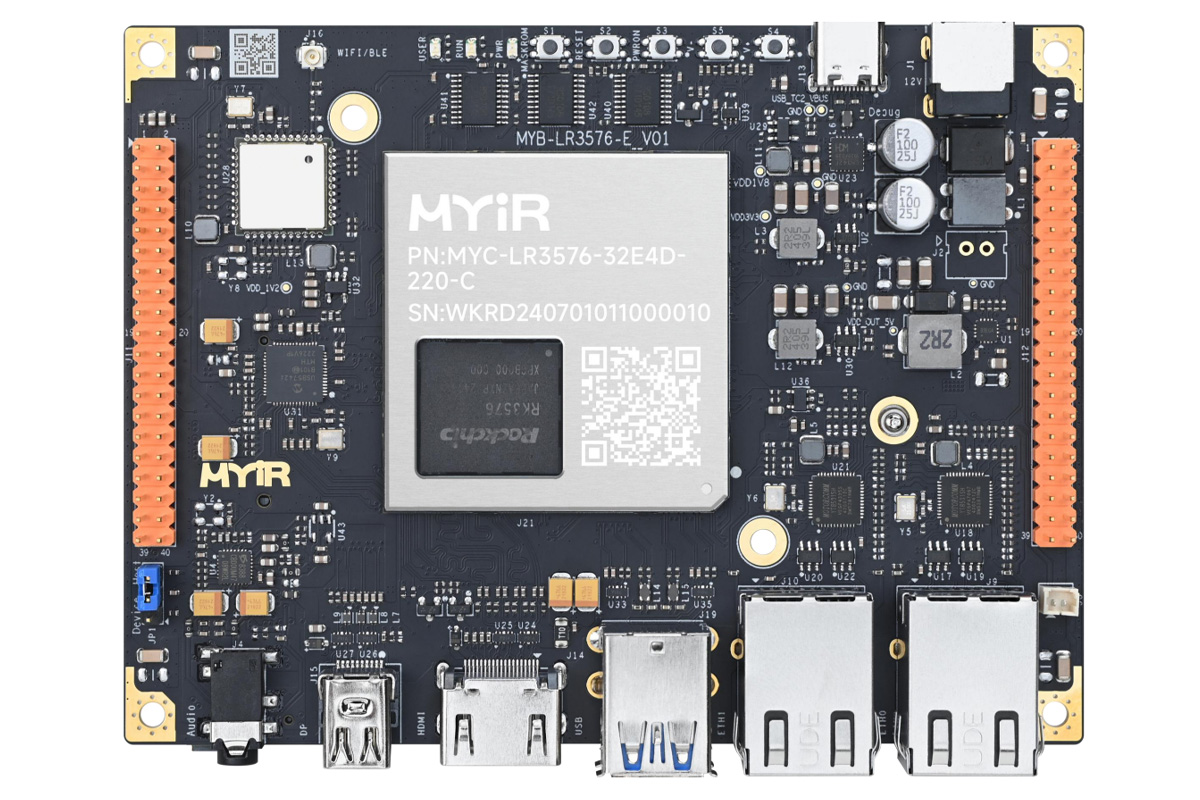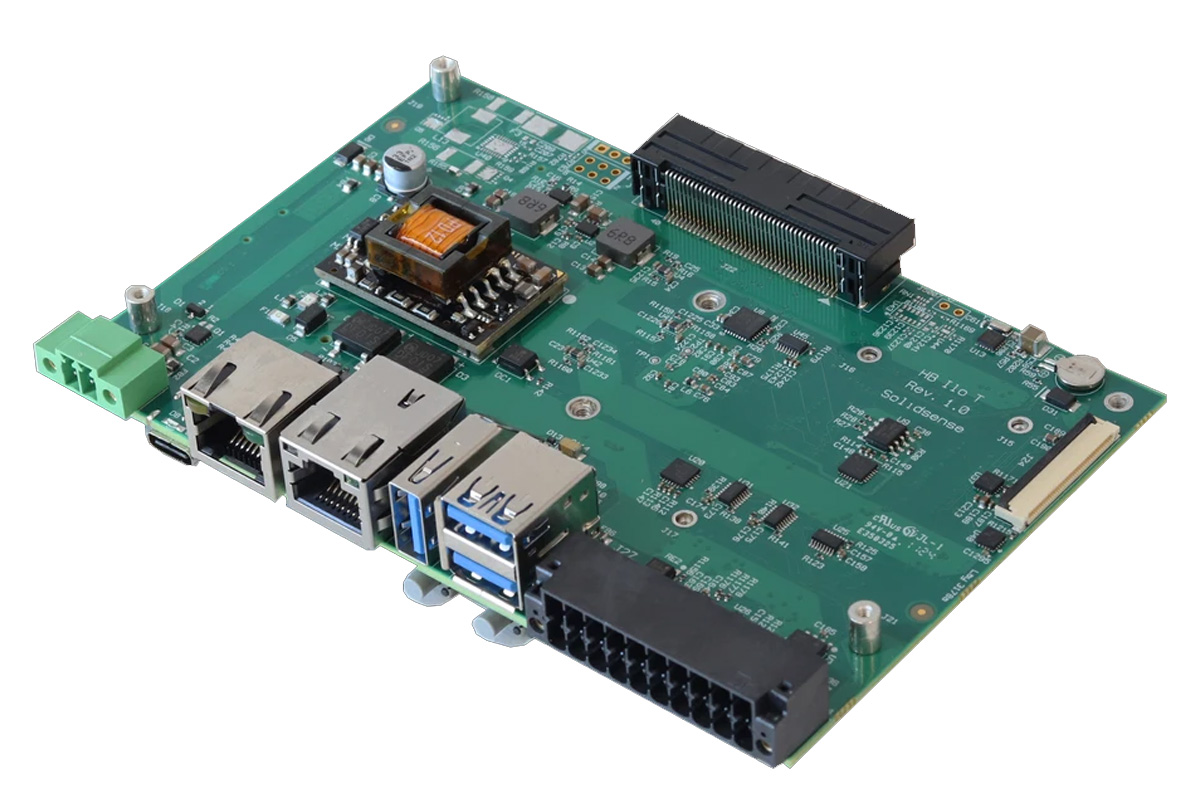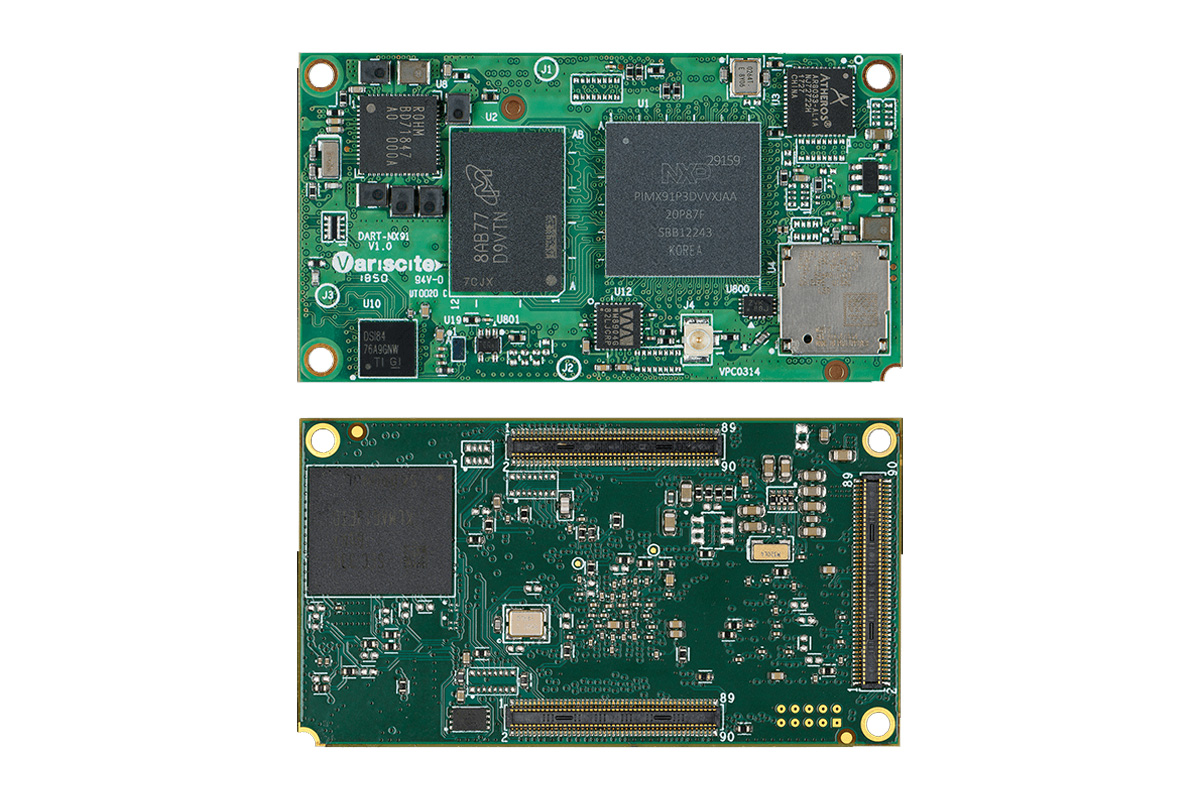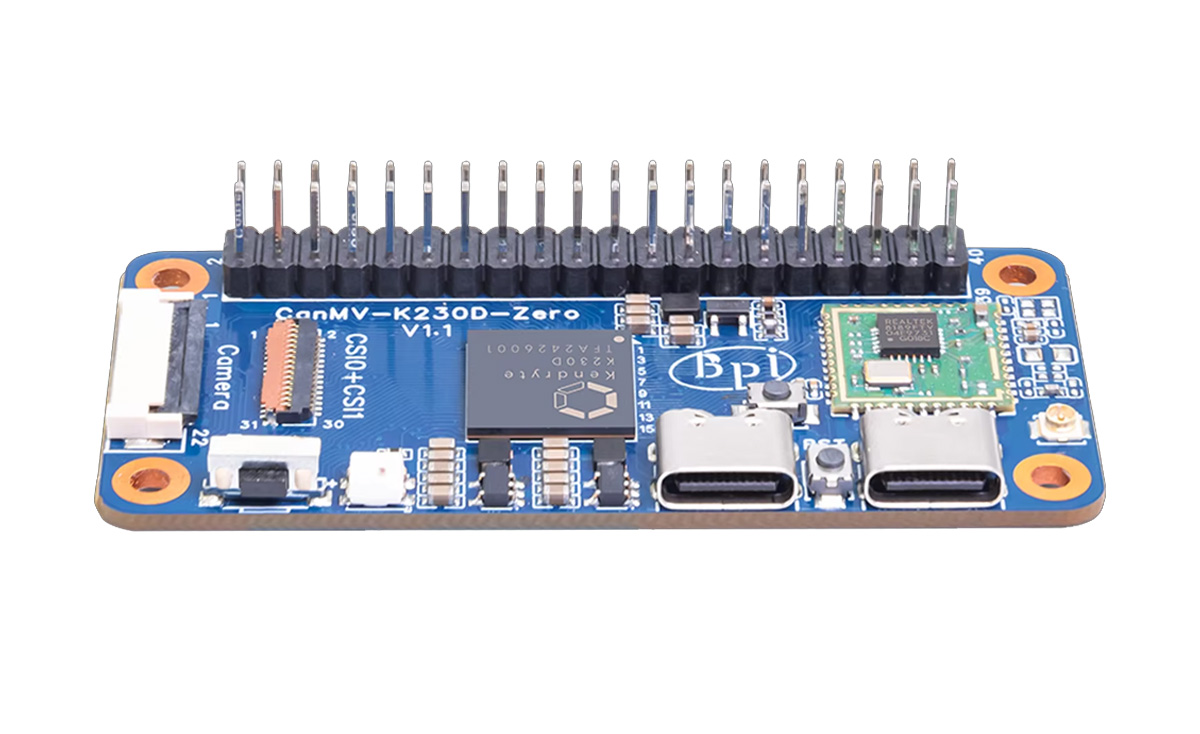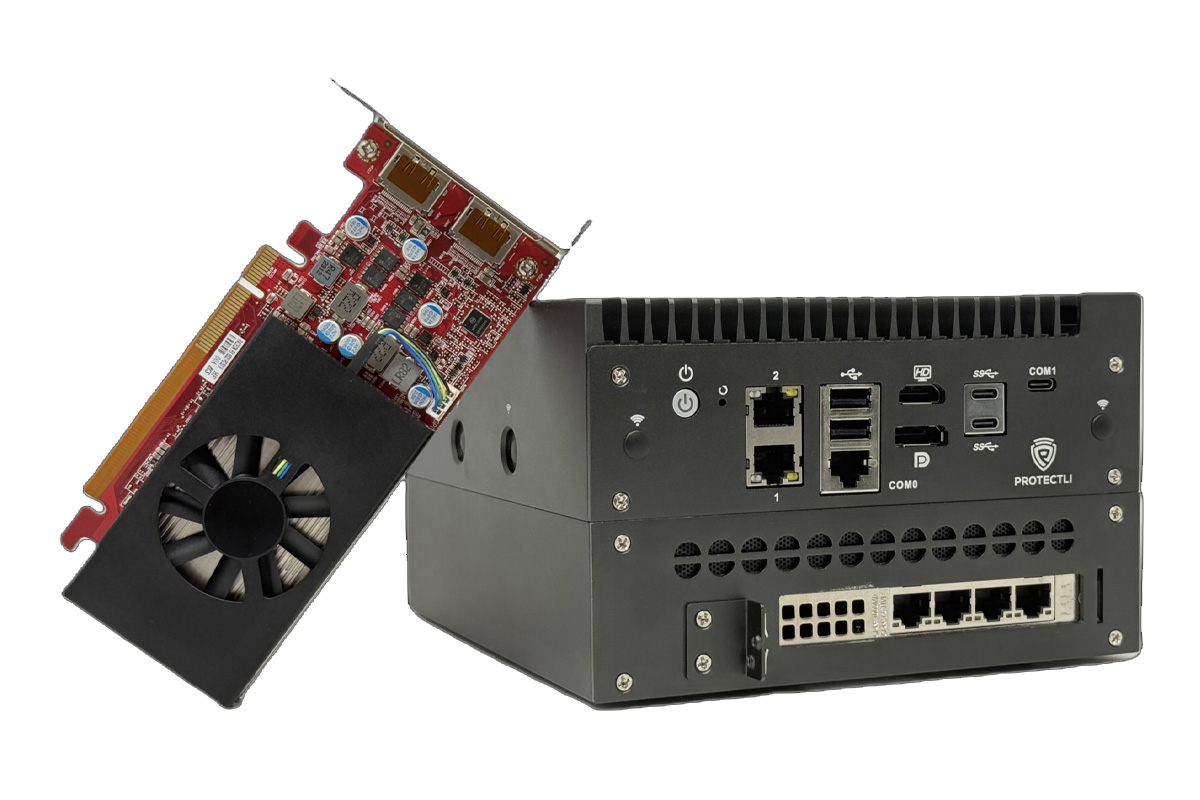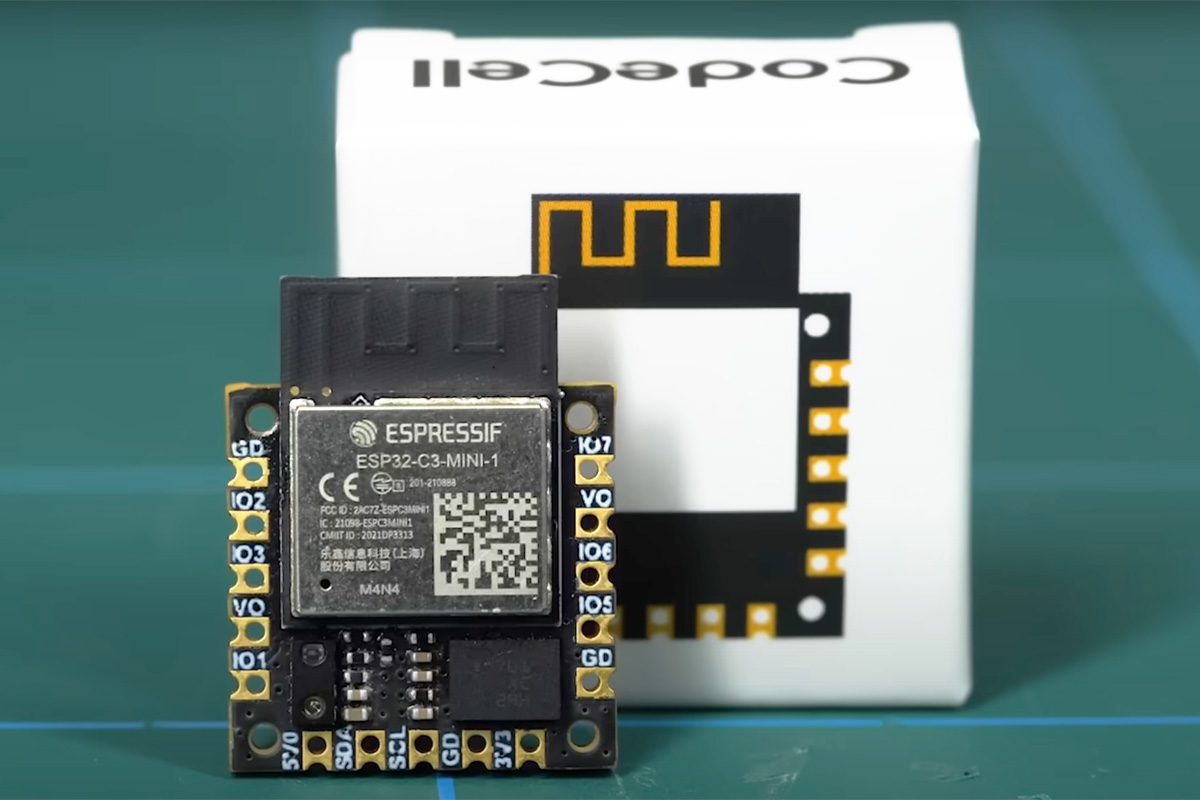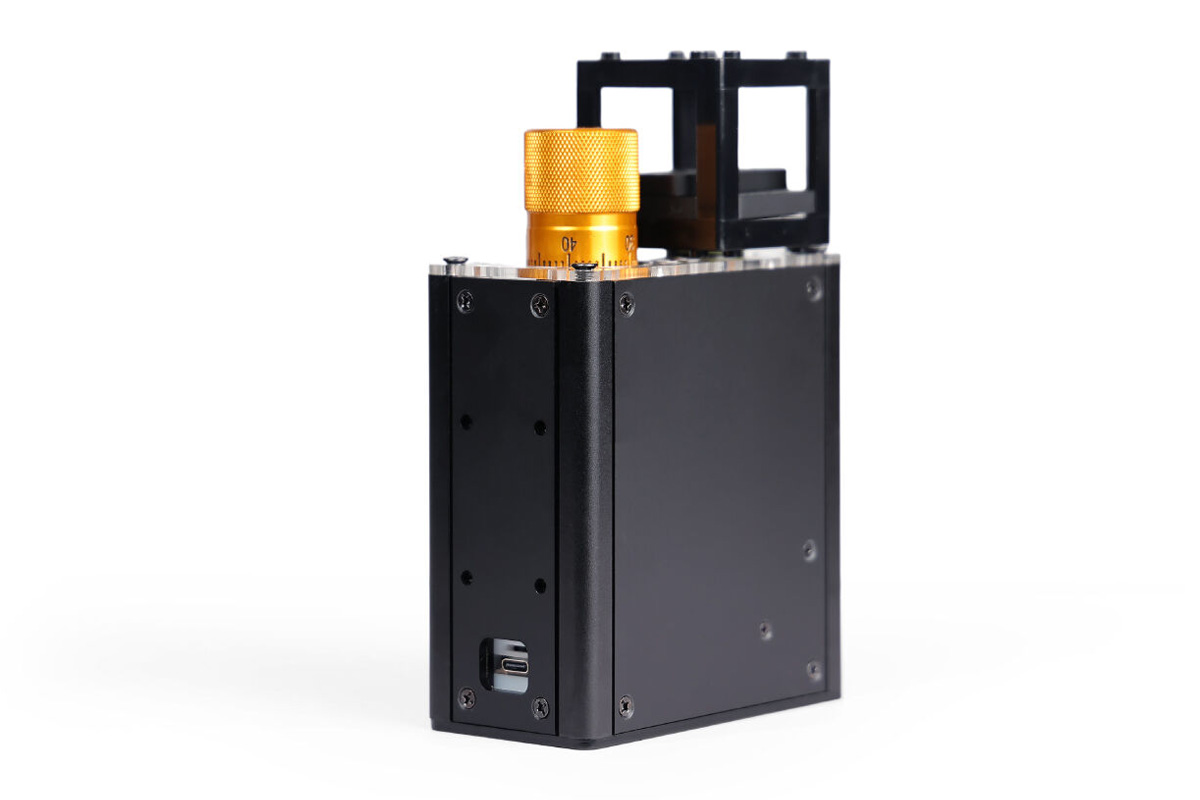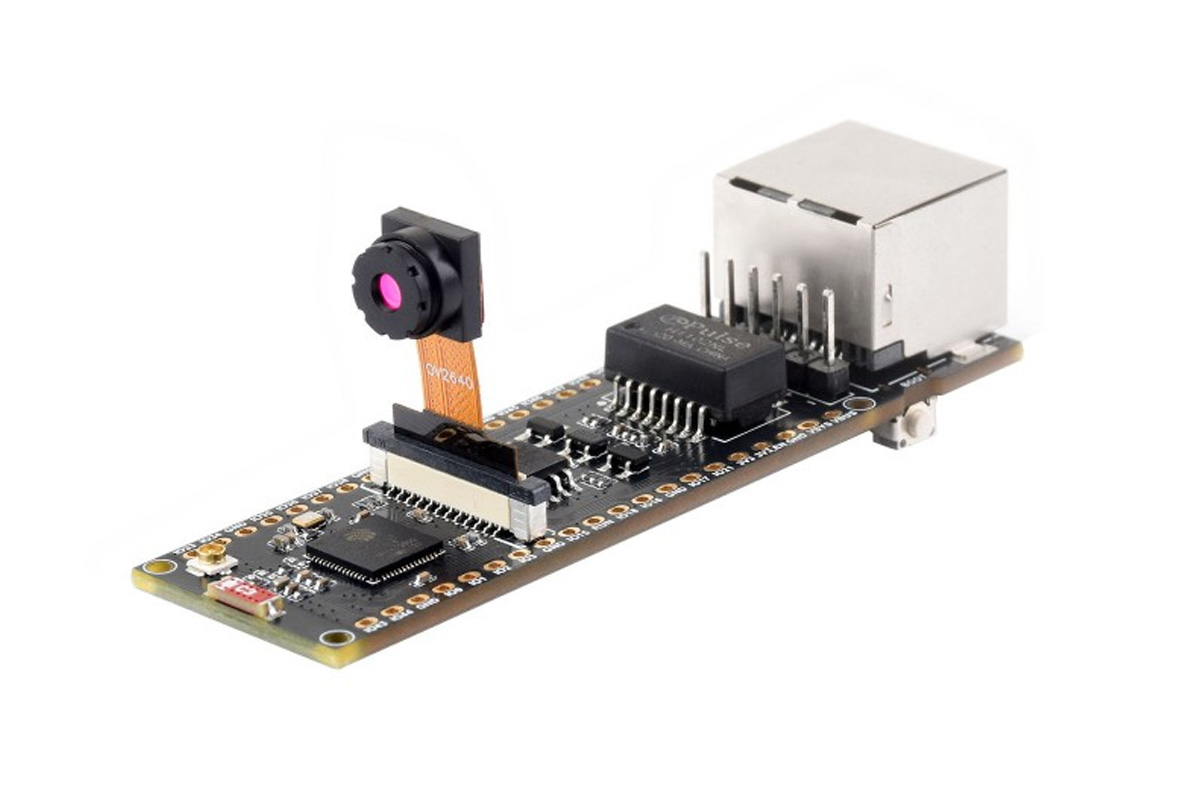MYiR Tech MYC-LR3576 is a system-on-module (SoM) based on Rockchip RK3576 octa-core Cortex-A72/A53 SoC with a 6 TOPS NPU and 8K video support suitable for AIOT applications that powers the MYD-LR3576 development board. The SoM supports up to 8GB of LPDDR4X RAM and 64GB of eMMC storage, along with a 32Kbit EEPROM. Connectivity options include dual Gigabit Ethernet ports, USB 3.2, and more. For multimedia, it supports HDMI, DisplayPort, eDP, MIPI-DSI, and MIPI CSI interfaces, and up to 8K video decoding/4K video encoding. The MYC-LR3576 also offers several audio I/O and multiple GPIO and I2C interfaces suitable for embedded systems. The MYD-LR3576 development board gives access to dual Gigabit Ethernet ports, Wi-Fi and Bluetooth support, HDMI, Mini DisplayPort, USB 3.0 ports, and GPIO headers. It also supports MIPI camera modules and a 10.1-inch LCD module and provides full access to the SoM’s features. Previously we have written about various development […]
SolidRun unveils HummingBoard i.MX8M IIOT SBC and the IIOT-200-8M Gateway for Edge AI and industrial IoT applications
SolidRun has recently introduced HummingBoard i.MX8M IIOT SBC and IIOT-200-8M Gateway built around the NXP i.MX 8M Plus Edge AI processor. Designed for IIoT and HMI applications the SBC hosts the NXP i.MX 8M Plus SOM which gives access to various connectivity options, including dual Gigabit Ethernet, Wi-Fi/Bluetooth, CAN-FD, RS232/RS485, and audio. Additionally, it has support for industrial protocols such as Modbus and MQTT, making it suitable for factory automation and smart energy projects. Based on the HummingBoard i.MX8M IIOT SBC, the IIOT-200-8M Gateway features a DIN-rail mountable design, which sacrifices some I/O interfaces to meet the demands of harsh deployment environments. Both products support Industrial temperature ranges, fanless construction, and compact dimensions, making them reliable choices for demanding applications like industrial automation, predictive maintenance, and remote monitoring. HummingBoard i.MX8M IIOT SBC Specifications SoC – NXP i.MX 8M Plus AI SoC CPU Quad-core Arm Cortex-A53 processor @ up to 1.6 GHz […]
Variscite DART-MX91 SoM offers dual GbE, WiFi 6, 15 years support
The Variscite DART-MX91 system-on-module (SoM) is a compact, cost-effective NXP i.MX 91 Arm Cortex-A55 module which is part of the DART Pin2Pin family already includes the DART-MX93 and DART-MX8M-PLUS among others. The SoM supports up to 2GB of LPDDR4 RAM and 8 to 128 GB of EMMC storage along with dual CAN-FD, dual Gigabit Ethernet, and dual USB interfaces. Wireless options include certified Wi-Fi 6, Bluetooth 5.4, and optional 802.15.4 for low-power wireless communication. Additionally, it supports three I2S audio interfaces, S/PDIF, and support for both digital and analog stereo mics along with 8-bit parallel camera interfaces and display with a capacitive touch controller. Variscite DART-MX91 SoM Specifications SoC – NXP i.MX91 single-core Cortex-A55 processor clocked at 1.4 GHz with 32 KB I-cache and D-cache, 256KB L2 cache (no 3D GPU) System Memory – Up to 2GB LPDDR4 Storage – 8 to 128GB eMMC flash Networking Qualcomm Atheros AR8033 Gigabit […]
$29 Banana Pi BPI-CanMV-K230D-Zero features Kendryte K230D RISC-V SoC for AIoT applications
The Banana Pi BPI-CanMV-K230D-Zero is a compact and low-power single-board computer built around the Kendryte K230D dual-core XuanTie C908 RISC-V chip with an integrated third-generation Knowledge Process Unit (KPU) for AI computation. It follows the form factor of the Raspberry Pi Zero or Raspberry Pi Zero 2W board and targets IoT and ML applications. The SBC comes with 128MB of LPDDR4 RAM and uses a microSD card slot for storage. Additional features of this board include dual MIPI-CSI camera inputs for 4K video, a 40-pin GPIO header for I2C, UART, SPI, PWM, and more. Wireless features include 2.4GHz WiFi, USB 2.0 with OTG, and microphone support. These features make this SBC suitable for applications such as AI tasks such as image, video, and audio processing. Banana Pi BPI-CanMV-K230D-Zero Specifications SoC – Kendryte K230D CPU CPU1 – 64-bit RISC-V processor @ 1.6GHz with RVV 1.0 support CPU2 – 64-bit RISC-V processor […]
Protectli VP32XX – Alder Lake-N network appliances with dual 2.5GbE, NVMe and SATA storage options
The Protectli VP32XX is a family of Alder Lake-N network appliances for high-performance applications. This compact device comes in two variants: the VP3210, powered by a quad-core Intel N100 processor, and the VP3230, built around an eight-core Intel Core i3-N305 processor. Both support up to 16GB of DDR5 RAM and the company mentions that they have tested it with up to 48 GB. They also include 32GB of eMMC storage with dual 2.5GbE. Storage options include dual M.2 NVMe SSD slots and an expansion bay that supports up to four 2.5-inch SATA SSDs, making them ideal for NAS applications. Additionally, they have various I/O options, including HDMI, DisplayPort, multiple USB ports, and a PCIe slot, making them compatible with multimedia workstations or networking hubs. Protectli VP3200 specifications: Processor VP3210 – Intel Processor N100 quad-core Alder Lake-N processor @ up to 3.4 GHz (Turbo) with 6MB cache, 24EU Intel HD graphics @ 750 MHz; […]
CodeCell is a ESP32-C3 mini development board for robots, wearables, smart home projects
Engineer and YouTuber Carl Bugeja recently developed CodeCell, a tiny ESP32-C3 development board designed as the brain for robots, wearables, and smart home devices. This module features a nine-axis inertial measurement unit (IMU) for motion fusion and an optional VCNL4040 light sensor. It includes a USB Type-C port for data and power as well as a lithium-polymer battery with a charging circuit. Measuring just 18.5 x 18.5mm this compact board is even smaller than other tiny ESP32 development boards such as Waveshare’s ESP32-S3-Zero and Seeed Studio’s XIAO ESP32S3. However, the Epi C3 is smaller at 23 x 12.75 mm, and so are the Unexpected Maker NANOS3 (25 x 10 mm) and Unexpected Maker OMGS3 (28 x 11 mm). CodeCel ESP32-C3 mini development board specification Microcontroller – ESP32-C3 RISC-V MCU 160MHz 32-bit RISC-V processor core 400kB SRAM, 4MB flash storage Wi-Fi 4 and Bluetooth Low Energy (BLE) connectivity Sensors Vishay VCNL4040 light […]
OpenUC2 10x is an ESP32-S3 portable microscope with AI-powered real-time image analysis
Seeed Studio has recently launched the OpenUC2 10x AI portable microscope built around the XIAO ESP32-S3 Sense module. Designed for educational, environmental research, health monitoring, and prototyping applications this microscope features an OV2640 camera with a 10x magnification with precise motorized focusing, high-resolution imaging, and real-time TinyML processing for image handling. The microscope is modular and open-source making it easy to customize and expand its features using 3D-printed parts, motorized stages, and additional sensors. It supports Wi-Fi connectivity with a durable body, uses USB-C for power and swappable objectives make it usable in various applications. Previously we have written about similar portable microscopes like the ioLight microscope and the KoPa W5 Wi-Fi Microscope, and Jean-Luc also tested a cheap USB microscope to read part number of components. Feel free to check those out if you are looking for a cheap microscope. OpenUC2 10x specifications: Wireless MCU – Espressif Systems ESP32-S3 CPU […]
Waveshare ESP32-S3 ETH board provides Ethernet and camera connectors, supports Raspberry Pi Pico HATs
Waveshare has recently launched the ESP32-S3-ETH development board with an Ethernet RJ45 jack, a camera interface, and compatibility with Raspberry Pi Pico HAT expansion boards. This board includes a microSD card interface and supports OV2640 and OV5640 camera modules. Additionally, it offers an optional Power over Ethernet (PoE) module, making it ideal for applications such as smart home projects, AI-enhanced computer vision, and image acquisition. Previously, we have written about LILYGO T-ETH-Lite, an ESP32-S3 board with Ethernet and optional PoE support. We have also written about LuckFox Pico Pro and Pico Max, Rockchip RV1106-powered development boards with 10/100M Ethernet and camera support. The ESP32-S3-ETH board is like a combination of those two, where you get an ESP32-S3 microcontroller, Ethernet (with optional PoE), and a camera interface. ESP32-S3 ETH development board specifications: Wireless module ESP32-S3R8 MCU – ESP32-S3 dual-core LX7 microprocessor @ up to 240 MHz with Vector extension for machine learning Memory – 8MB PSRAM Storage […]


